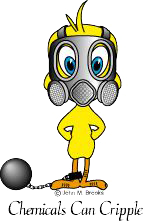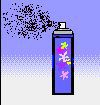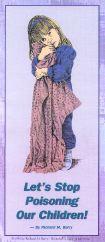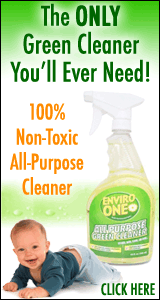Multiple Chemical Sensitivity
- Details
- Category: Multiple Chemical Sensitivity
- Hits: 9875
(Environmental Illness)
Multiple Chemical Sensitivity (MCS) is basically a subset of Environmental Illness (EI), which is caused by living in a toxic world. The chemicals that were synthesized after World War II—including, pesticides, synthetic fragrances, cleaning products, detergents, etc.—are mostly "petrochemicals" (petroleum based) and are quite toxic to humans. There have been virtually no studies done on the majority of these chemicals to see how they affect humans. The industry just placed the chemicals in the environment with the assumption that they are "safe till proven toxic" instead of the other way around! One of the biggest offenders is PERFUME and other scented products. Did you know that many of the ingredients in your perfume are the exact same ingredients found in GASOLINE??!! I didn't either! The scary thing is that the perfume industry is NOT REGULATED at all—they can put any number of chemicals in fragrance without revealing what those chemicals are or how they affect humans. We humans are all participating in a giant "lab experiment" against our knowledge and against our will, and it's making some of us VERY sick.
 Those of us who are becoming chronically ill from these chemicals are similar to the "canaries in the coal mine." Coal miners would take a canary into the mines with them to warn them when the air became toxic. They knew that when the canary stopped singing or died, it was time to get out before it affected them as well. We "human canaries" are here to warn the rest of you that, unless you start making changes and avoid as many toxic chemicals as possible, you too may become very sick. Nontoxic living is actually much "simpler" and cheaper!
Those of us who are becoming chronically ill from these chemicals are similar to the "canaries in the coal mine." Coal miners would take a canary into the mines with them to warn them when the air became toxic. They knew that when the canary stopped singing or died, it was time to get out before it affected them as well. We "human canaries" are here to warn the rest of you that, unless you start making changes and avoid as many toxic chemicals as possible, you too may become very sick. Nontoxic living is actually much "simpler" and cheaper!




 From Chronic Fatigue Syndrome to Multiple Chemical Sensitivity Diagnosis and Improvement at Last!
From Chronic Fatigue Syndrome to Multiple Chemical Sensitivity Diagnosis and Improvement at Last! Not everyone will have the incentive to make all these changes—however, every change you make WILL make a difference! This way of living is not only much better and safer for YOU—it's also much better for the environment! Switching to nontoxic living can be a very pleasant experience if we think of it as a return to the purity and safety of the way our ancestors lived. Many of the suggestions here were actually used by our ancestors before all the toxic chemicals were marketed to make life "easier." We pay dearly for that "ease" with the loss of safe, clean air to breathe and—in many cases—the loss of our health. Some of the products may take a little more "elbow grease"—others actually work BETTER than their toxic alternatives. Either way you can take major steps to clean up your environment and protect yourself and your family from toxic chemicals by following these suggestions…
Not everyone will have the incentive to make all these changes—however, every change you make WILL make a difference! This way of living is not only much better and safer for YOU—it's also much better for the environment! Switching to nontoxic living can be a very pleasant experience if we think of it as a return to the purity and safety of the way our ancestors lived. Many of the suggestions here were actually used by our ancestors before all the toxic chemicals were marketed to make life "easier." We pay dearly for that "ease" with the loss of safe, clean air to breathe and—in many cases—the loss of our health. Some of the products may take a little more "elbow grease"—others actually work BETTER than their toxic alternatives. Either way you can take major steps to clean up your environment and protect yourself and your family from toxic chemicals by following these suggestions… Air Fresheners (or "Air Poisoners"?) – YOU Decide!!
Air Fresheners (or "Air Poisoners"?) – YOU Decide!! – By Richard M. Barry
– By Richard M. Barry




